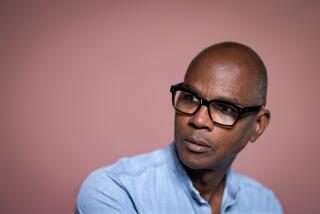Wilshire Center
- Share via
A mini-restrospective of pioneering West Coast modernist Peter Krasnow could double as a crash course in 20th-Century art. Krasnow, who died in 1979, has operated like a sponge, absorbing every new trend the art world delivered, and his work has moved through several distinct phases. That he’s such a facile technician and so good at mastering whatever style catches his eye may have hindered his development as an innovator.
Born in the Ukraine in 1887, Krasnow emigrated to the United States in 1907, and after eight years of art school in Chicago, moved to New York and embarked on his Ashcan period; work from this time is evocative of George Grosz and Marc Chagall. Unhappy in what he described as “the unfriendly East Coast,” he moved to Los Angeles in 1922 and immersed himself in the imagery and themes of Judaism, producing what may stand as his most personal and original work. A visit to Paris in the ‘30s resulted in his Cubist/Fauve period, and his return to Los Angeles in 1934 launched him on the non-representational style he is known for.
Distilling the figure to abstracted shapes and volumes, he explored issues of form, texture, color and outline, and turned out a series of sculptural works--mostly organic abstractions--fashioned in wood. Pieces from every phase of this prolific career are included, and one comes away with a sense of Krasnow’s unflagging devotion to the creative muse. (Tobey C. Moss, 7321 Beverly Blvd., to May 13.)
More to Read
The biggest entertainment stories
Get our big stories about Hollywood, film, television, music, arts, culture and more right in your inbox as soon as they publish.
You may occasionally receive promotional content from the Los Angeles Times.










